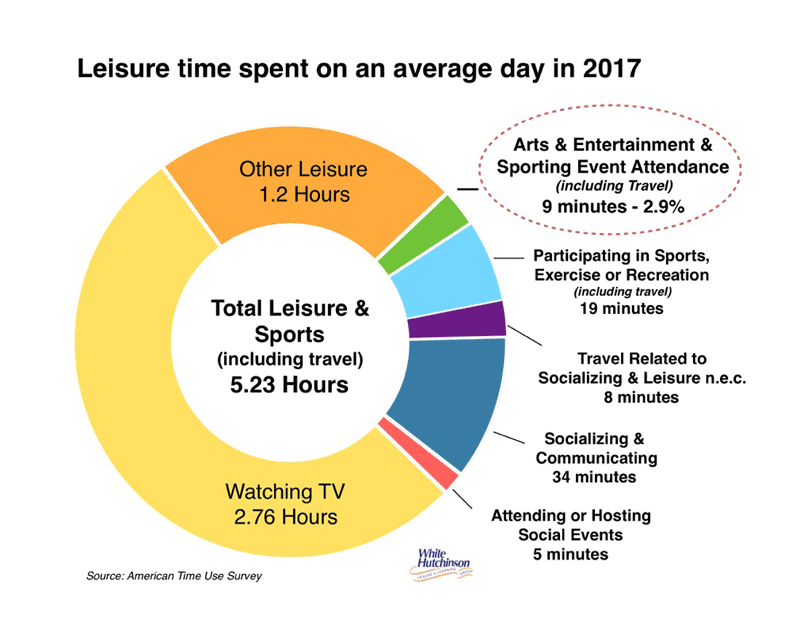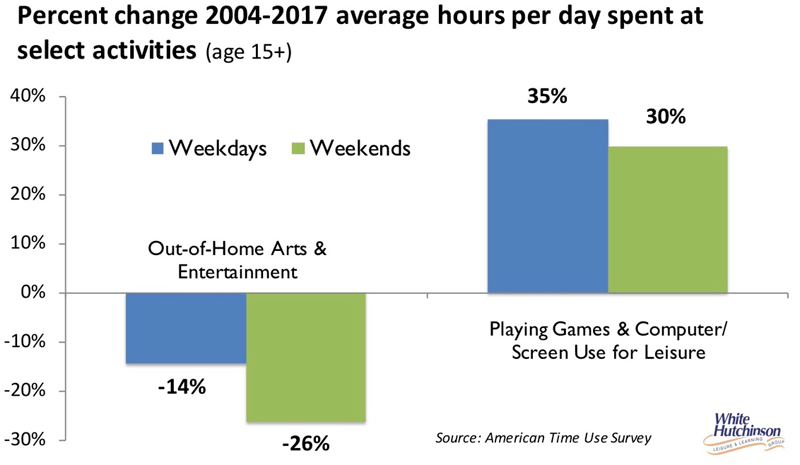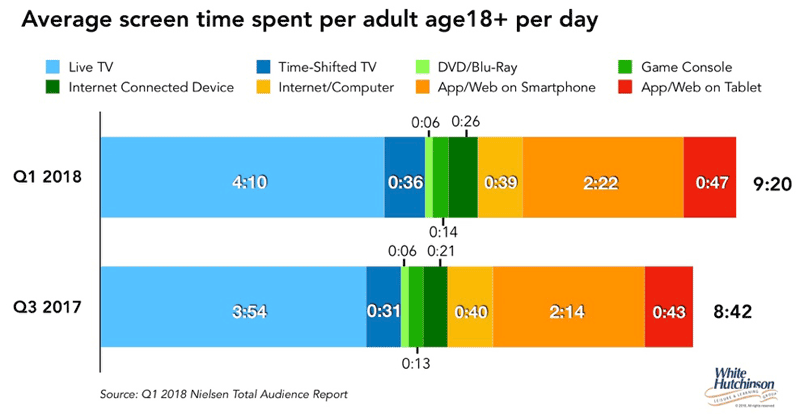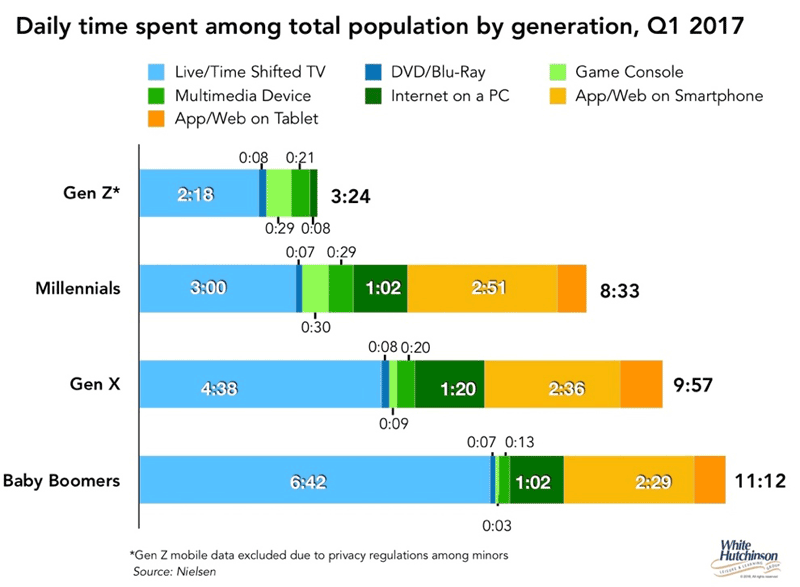
Vol. XVIII, No. 7, August 2018
- Editor's corner
- Brailling the leisure culture
- Structure changes responsible for baby bust?
- The rise of festival competition to community-based entertainment venues
- Americans' diets are diverse
- The rise of agritainment/agritourism
- The changing composition of bowlers
- Who is "middle class" and "upper income"?
- What we eat has changed
- Digital screen time on the increase
Digital screen time on the increase
Leisure time is a zero-sum game. People only have a limited amount of leisure time each day. In 2017 it was an average of 5 hours, 14 minutes per day.

The vast majority of leisure time is spent watching television and on digital screens. The more time people spend engaged on their digital screens as their primary activities, the less time they have to travel to and from and attend different types of leisure venues, such as community leisure venues (CLVs) and its subcategory of FECs. In fact, in 2017, Americans on average only spent 9 minutes a day for travel and attendance at all types of entertainment, arts and sporting event venues.
Over time, Americans have increased their digital screen time and decreased the time they spend attending entertainment and art venues.

The time spent on digital media has increased by more than one-half hour (38 minutes) since 2017 (time includes time while multitasking). Most of the increase is time watching television, followed by time on apps and the Web on smartphones.

When we look at time spent by generation, there is some good news. The older generations are spending the most time on their screens. Millennials, the prime target market for most types of CLVs and FECs, spend less time on all their screens than older adults. And the primary reason is they spend less time sitting on their sofas watching TV, contrary to the impression some reporting gives us that they are the big bingers on Netflix and other steaming services.

Regardless of that good news, the digital screen has become one of the major competitors to out-of-home leisure experiences, including visiting CLVs and FECs.
Vol. XVIII, No. 7, August 2018
- Editor's corner
- Brailling the leisure culture
- Structure changes responsible for baby bust?
- The rise of festival competition to community-based entertainment venues
- Americans' diets are diverse
- The rise of agritainment/agritourism
- The changing composition of bowlers
- Who is "middle class" and "upper income"?
- What we eat has changed
- Digital screen time on the increase


